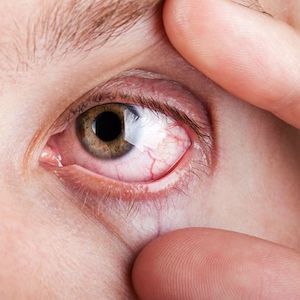Article
Cyclosporine Ophthalmic Solution Shows Consistent Therapeutic Effect for Dry Eye Disease
Author(s):
71.6% of patients showed a clinically meaningful improvement in total corneal fluorescein staining at 4 weeks after using the ophthalmic solution.

New data from the phase 3 ESSENCE-2 trial evaluating the investigational 0.1% cyclosporine ophthalmic solution (CYCLASOL) show consistent and superior therapeutic effects on the ocular surface in patients with dry eye disease.
The agent is the first topical preservative-free, water-free, anti-inflammatory and immunomodulating ophthalmic solution, containing 0.1% cyclosporine in a novel vehicle, developed for the treatment of dry eye disease.
The findings were presented by biopharmaceutical company Novaliq at the American Cataract and Refractive Surgery (ASCRS) annual meeting in Washington D.C.
A total of 834 subjects were included in the multicenter, randomized, double-masked, vehicle controlled ESSENCE-2 trial. The trial evaluated the efficacy, safety, and tolerability of the ophthalmic solution for the treatment of signs and symptoms of dry eye disease in patients not responding to artificial tears.
Data show on day 15 and day 29, the change from baseline in total Corneal Fluorescein Staining (tCFS) was statistically significant in the ophthalmic solution group, compared to the vehicle (P = .0022 and P = .0278).
Additionally, at day 29, the proportion of patients showing a clinically meaningful improvement in tear production (≥10 mm increase) was statistically significantly higher compared to the vehicle (P = .0487).
Investigators also found 71.6% of ophthalmic solution treated patients had a ≥3 grade improvement in tCFS at week 4. The proportion of responders was significantly higher compared to vehicle-treated patients (P = .0002).
Further, the responders showed statistically significant improvements in a variety of symptoms including but not limited to Dryness (P = .0074) compared to non-responders at day 29.
Overall, the solution was considered well-tolerated, with a low number of all adverse events and ocular adverse events. They were found to generally be of mild intensity and similarly distributed between each treatment group. The release noted up to 86.5% of the patients reported an immediate feeling of comfort when describing the ophthalmic solution eye drops.
"There is a high unmet need for a rapid, consistent, safe, sustained, and comfortable treatment for dry eye disease,” said Dr Christian Roesky, Chief Executive Officer Novaliq in a statement. “These data support that CyclASol potentially has the power eye care professionals require with the comfort their dry eye disease patients desire.”
The company intends to submit the solution for approval in the United States in July 2022.



